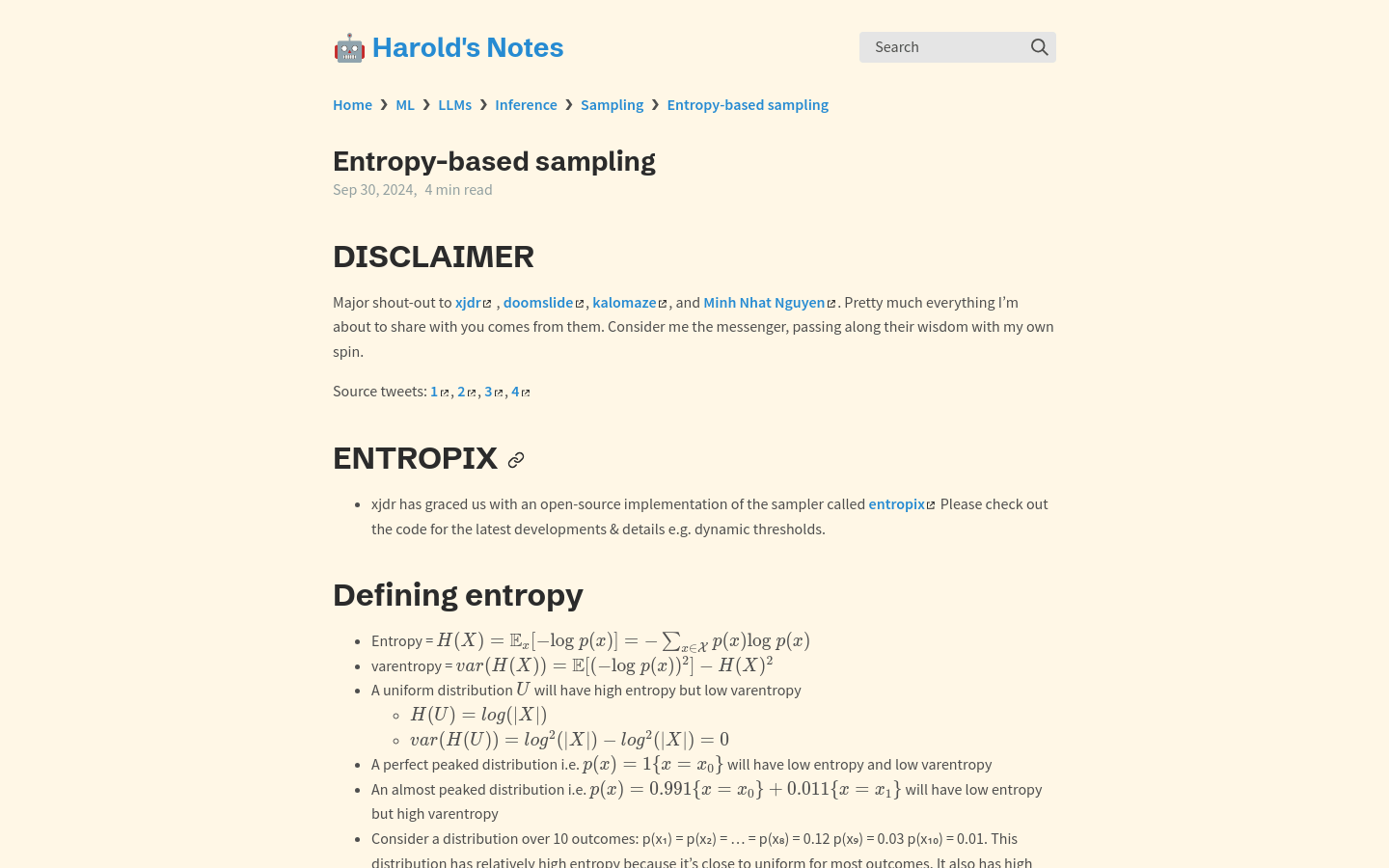

Entropy Based Sampling
Overview :
Entropy-based sampling is a technique based on the theory of entropy, aimed at enhancing the diversity and accuracy of language model outputs when generating text. It evaluates model uncertainty by calculating the entropy and variance entropy of the probability distribution, allowing for adjustments in sampling strategy when the model may become trapped in local optima or overly confident. This method helps avoid monotonous repetition in outputs while increasing diversity during periods of high model uncertainty.
Target Users :
The primary target audience includes researchers and developers in the field of Natural Language Processing (NLP), especially those focused on enhancing the performance and output quality of language models. This technique aids them in optimizing model outputs, increasing the diversity and accuracy of generated texts, and preventing the model from falling into monotonous repetition or excessive confidence during the generation process.
Use Cases
In question and answer systems, the use of entropy-based sampling enables the generation of more diverse answers.
In text summarization tasks, this technique helps create more accurate and comprehensive content summaries.
In dialogue system development, employing entropy-based sampling allows for more natural and fluid conversations.
Features
Dynamic threshold adjustment: Adjust sampling strategies dynamically based on real-time calculations of entropy and variance entropy.
Entropy calculation: Calculate the entropy of the current probability distribution to evaluate model uncertainty.
Variance entropy calculation: Calculate the variance entropy of the probability distribution to further refine model uncertainty assessment.
Threshold determination: Set thresholds for entropy and variance to decide whether to adjust the sampling strategy.
Branch sampling: Inject entropy through branch sampling when the model may be stuck in local optima to increase output diversity.
Fallback resampling: Avoid monotonous repetition by using fallback resampling when the model is overly confident.
Inject 'Wait' token: Inject a 'Wait' token to prompt the model to reassess during high uncertainty.
Adaptive beam search: Dynamically adjust the beam search width based on entropy and variance entropy.
How to Use
1. Calculate the entropy and variance of the probability distribution of the current model output.
2. Set thresholds for entropy and variance to determine model uncertainty.
3. If both the entropy and variance are below their respective lower thresholds, execute conventional greedy decoding.
4. If the entropy is below the high threshold and variance is above the high threshold, perform branch sampling to inject entropy.
5. If both the entropy and variance are above their respective high thresholds, perform fallback resampling.
6. If the entropy is above the low threshold and variance is below the high threshold, inject a 'Wait' token to prompt the model to reassess.
7. Dynamically adjust the width of beam search based on current entropy and variance for adaptive beam search.
8. Repeat steps 1 through 7 until the model outputs an end token or reaches the maximum search length.
Featured AI Tools

Gemini
Gemini is the latest generation of AI system developed by Google DeepMind. It excels in multimodal reasoning, enabling seamless interaction between text, images, videos, audio, and code. Gemini surpasses previous models in language understanding, reasoning, mathematics, programming, and other fields, becoming one of the most powerful AI systems to date. It comes in three different scales to meet various needs from edge computing to cloud computing. Gemini can be widely applied in creative design, writing assistance, question answering, code generation, and more.
AI Model
11.4M
Chinese Picks

Liblibai
LiblibAI is a leading Chinese AI creative platform offering powerful AI creative tools to help creators bring their imagination to life. The platform provides a vast library of free AI creative models, allowing users to search and utilize these models for image, text, and audio creations. Users can also train their own AI models on the platform. Focused on the diverse needs of creators, LiblibAI is committed to creating inclusive conditions and serving the creative industry, ensuring that everyone can enjoy the joy of creation.
AI Model
6.9M













